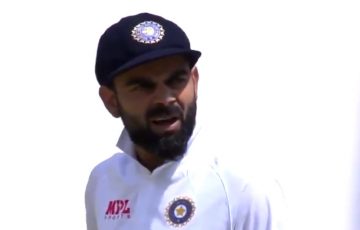Speaking about the decision review system, Sanjay Jagdale, the secretary of the Board of Control for Cricket in India, indicated that his organisation was still unwilling to see it used in all Test matches.
“The BCCI continues to believe that the system is not foolproof.”
Jagdale may or may not have then been asked whether his organisation thought a speed limit should be imposed in residential areas. He may or may not have responded:
“We have looked into this, but despite extensive research, it has not been conclusively proven that speed limits prevent all fatal accidents. If thousands of children have to die after being hit by vehicles travelling at 70mph, so be it. That imperfect scenario is still infinitely preferable to a greatly improved but still imperfect scenario.”
When it was put to him that large numbers of fatal and near-fatal accidents would put enormous strain on emergency services, Jagdale might possibly have replied:
“In cases where medical attention would not lead to a full recovery, the victim should instead be left to die. No-one wants to be made 99 per cent better after sustaining a major injury. Far better to just stick with the status quo, even if that means palming yourself around on a board with wheels because you’ve got two broken legs.”
When we said that Sanjay Jagdale may or may not have said these things, we were being economical with the truth. He didn’t say them. We made them up.
Oh, wait, he did say the first one. That’s not satire. That’s his actual argument.



If you start from the following premise: the umpires’ decision is correct and final, then clearly the use of DRS increases rather than decreases the error rate.
Some people believe in the infallibility of men in their 40s, 50s or 60s who are standing 22 yards from the action and who might (or might not) have had a heavy night the night before, and/or an earhole-bashing from the wife on the phone just before the start of the match.
Of course, some people believe in Santa. Some people believe that cricket corruption is now permanently eradicated now that Kaneria has been banned. Some people believe in the tooth fairy.
Personally, if my life or career depended on the decision, I’d go with the current technology rather than (or ideally, in conjunction with) the standing fella.
But I’m not Sanjay Jagdale.
India don’t really get wickets, so much of what UDRS is about is not useful to them.
I don’t want to beat a dead horse. For exactly the same reason, I would never want to milk a drowning cow. Which raises the question: would someone want to shear frozen sheep? Presumably not. How about ride a hyperventilating camel?
Ah, UDRS.
UdDeRS?
BCCI In Self-Serving Wilful Blindness Shock
But anyway, the main problem with the system is not the technology, or the reliability. It is the definition of “Just clipping.” Currently this seems to mean any time when the centreline of the ball is outside of the outer edge of the stump. In English this is properly referred to as “Hitting”, or more accurately, “Hitting very hard so as to rip the stump out of the ground.” Seriously, “Just clipping” should be reserved for balls that overlap the stump by a couple of millimetres or so, that is, er, those that are just clipping the stump, so to speak.
Exactly, Bert. Exactly.
http://tinyurl.com/c3kjbf6
Excellent. I can see now why the BCCI objects to the DRS. They think that the position of the ball is uncertain because the third umpire knows too much about its momentum.
The thing I just don’t get about the BCCI of India’s attitude to the DRS System is that…. I just don’t get it. What have they to gain by their attitude? Does their inability to appreciate the relative nature of quality of decision making also prevent the understanding that the sauce for the goose, if prepared often enough, will generally be good enough for the gander?
Rekindling an old flame there, Smudge? Noble effort.
Repeat until funny
What they don’t seem to grasp is that they’ll need to get to grips with the system eventually. Personally I don’t see why the ICC don’t show some backbone for once.
Oh sorry, I appear to have fallen over laughing at my own joke…
The funny thing is we don’t have speed limits in residential areas in India. Or at least not ones that are ever enforced. Generally the speed at which you can drive is determined by how bad the roads are. Now does it all make sense?